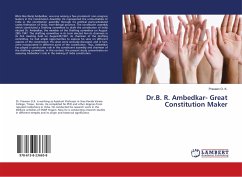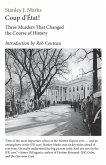Bhim Rao Ramji Ambedkar, was one among a few prominent non-congress leaders in the Constitution Assembly. He represented the untouchables of India in the constitution assembly through his political party-scheduled castes federation of India, from Bengal province. The constituent assembly which constituted a Drafting committee to draft the constitution of India elected Dr. Ambedkar, the member of the Drafting committee on August 29th 1947. The drafting committee in its term elected him its chairman in its first meeting held on August30,1947. As chairman of the drafting committee, he had ample opportunities to express his view on different aspects of the constitution. His views were seriously discussed, and in fact, were incorporated in different parts of the constitution. Thus, Ambedkar has played a constructive role in the constituent assembly and chairman of the drafting committee. In this context, the present study concentrates on assessing Ambedkar¿s role in the making of India constitution.
Hinweis: Dieser Artikel kann nur an eine deutsche Lieferadresse ausgeliefert werden.
Hinweis: Dieser Artikel kann nur an eine deutsche Lieferadresse ausgeliefert werden.








